I have two boys and very real concerns (read: I’m petrified) about their entry into the digital space. While I haven’t been one of the parents who refrained from submitting the kids’ photos or names into cyberspace, I am one of the last hold-outs for allowing them an instagram account. There’s also been a significant amount of avoidance about when they can get cell phones. After a lavish essay about why instagram is a good thing, our older child was awarded his own profile, with very strict rules and unlimited access by me. As I now venture into parenting kids who will eventually own a mobile phone, a roundup of parental control apps is in order.
The internet is changing at a rate faster than most parents can keep up. Over 50% of teens and pre-teens have been bullied online and over half of them do not tell their parents what has occurred. Fewer than 1 in 5 incidents are reported to law enforcement, and in most cases, self-esteem plunges and fear prevails. In the worst instances like for Nova Scotia’s Rehtaeh Parsons, suicide is the outcome.
I don’t want to terrify you, and honestly believe that keeping connected on social media and on the internet is a positive component for kids’ social development. Sharing interests, photos and life moments creates depth in relationships, but also often results in becoming self-centred. How many selfies does one need to post, really? Moderation is key.
Along with moderation, I believe like with raising a small child, a parent must use instincts and knowledge of their child to make decisions about how much control is enforced over devices, apps and rules. Whatever a parent decides, I would always recommend being open and honest with your child about the level of monitoring, reporting and limitations. You don’t want to hamper your personal bond and relationship by sneaking around. With good communication, parental control apps can be a guide for the kids, and a way for them to prove how responsible they can be. Boundaries can be discussed, and reports can be used as a great jumping off point for important conversations. They are listed in no particular order.
A Roundup of 7 Parental Control Apps and Devices
- Curbi: free for up to 2 devicesThis free parental control app is installed on your phone, and then a different version of your child’s phone. Through the parent app, you can monitor your child’s mobile web and app activity. I personally love the weekly reports as they give you a reason and reminder to sit down and have a quick chat with your child about the digital space.
Curbi Features:
– lock apps
– block inappropriate sites
– put a time limit on screen time.
– instant ‘timeout’ on the child’s phone
– weekly report via email
– can restrict camera or iTunes use including in-app purchases
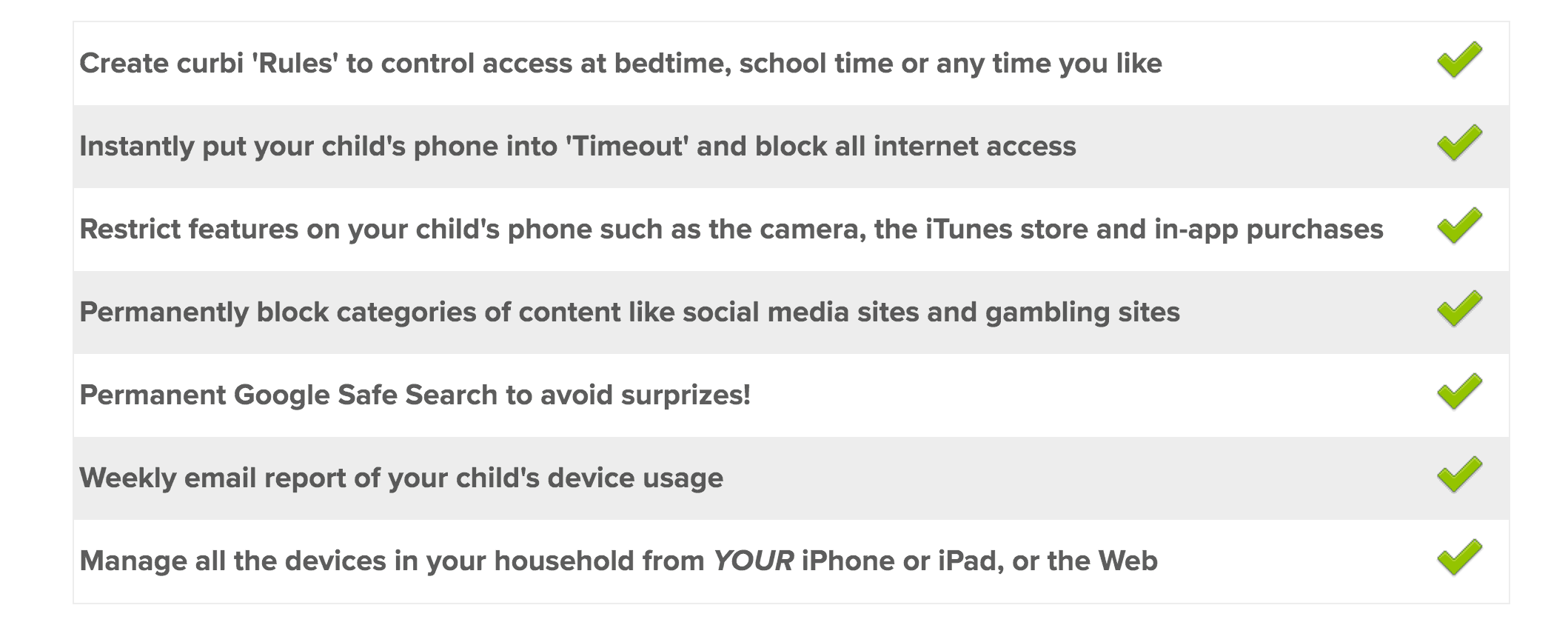
- Family Time: 5 child devices and unlimited parent devices: $1.15 per device / $69 per year or $27 per year for one child device.Like Curbi, you install a parent version on your phone and a child version on theirs. This is one of the most robust apps I have seen – adding geofencing, a panic button, pick me up and teen drive safe. These features give your child a chance to know boundaries and limits, and then prove that they can remain within them. The geofencing feature seems a bit creepy, but I suppose it would be necessary in some cases.
Family Time Features:
– allows parents to geofence (notification when kids go into an area of town) and also track location.
– Time limits, homework time, bedtime.
– app blocker as well, so Facebook can’t even be installed.
– Panic button.
– Teensafe drive tells you if they are going too fast
– ‘pick me up’ button tells them it’s time to pick them up. Instant check in and out alerts.3. Life 360: free
Life 360 is more about location tracking and private communication rather than app and internet use. The check-in notification can be useful for peace of mind.
– location tracking
– Group and direct texts
– Alerts when a person is at a location
– check in at a location to notify family members
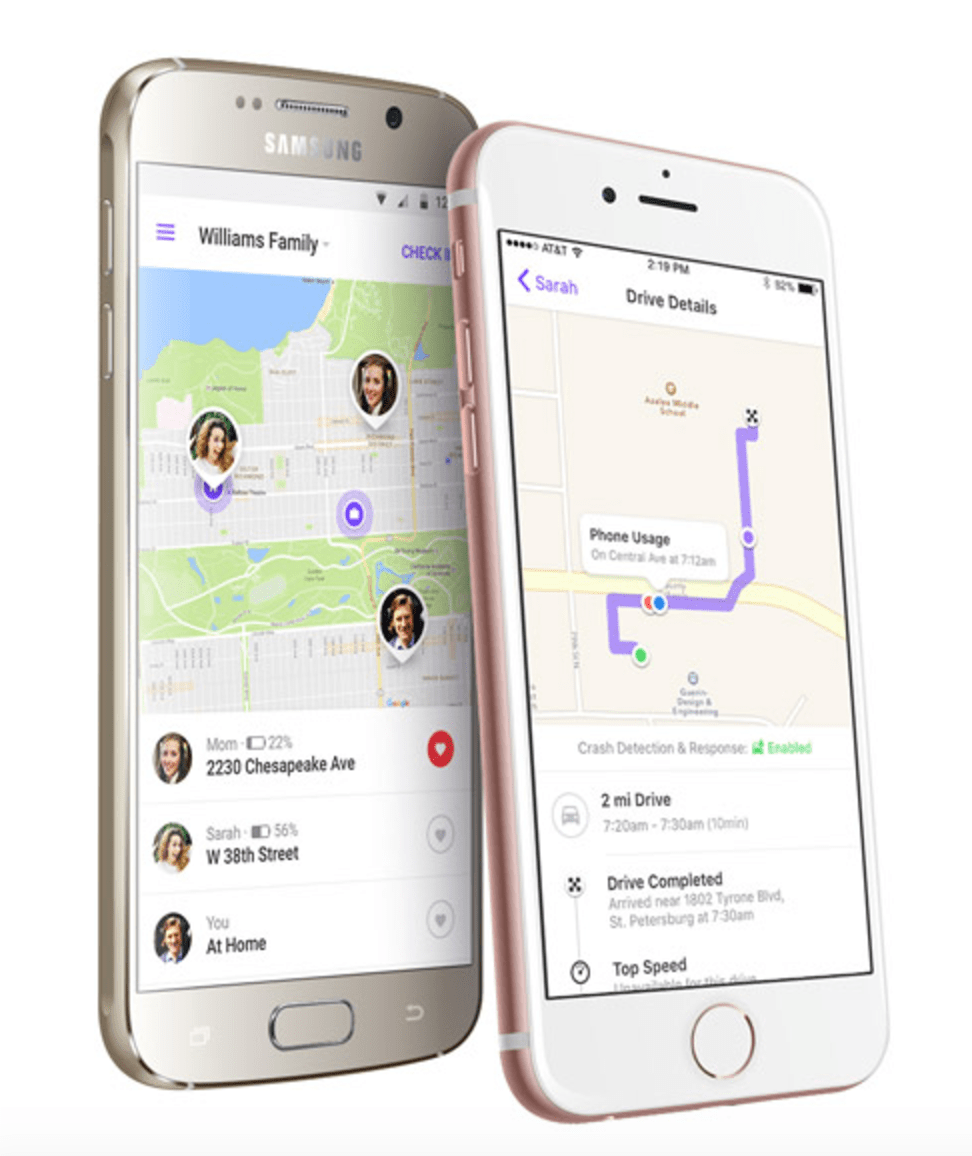
4. Circle with Disney: $99
I own a Circle, and found it very easy to set up. It pairs with home Wi-Fi and gives parents the ability to filter content, set a bedtime for devices, and even completely pause the Internet. Each user’s profile and settings can be completely customized based on age and parents’ preferences.
Circle Features:
– TIME LIMITS: Families can set daily Time Limits on any app or content category they want.
– FILTER: Families can set individual filter levels for each family member.
– INSIGHTS: Families can stay informed about where their kids spend their online time―by platform, category and website. Circle with Disney allows families to see a member’s total time spent online and the sites visited.
– PAUSE THE INTERNET: With the press of a button, families can pause the Internet, disabling access to a specific device, individual, or the entire home.
– BEDTIME™: Families can create a BedTime™ for each family member and their devices. Simply set a sleep time, when the devices will disconnect from the Internet, and an awake time, for the morning when the devices will reconnect.
– BLOCK ADS: Circle with Disney can block ads for any user’s devices.
– EVERY DEVICE: Circle with Disney knows every single device connected to a family’s network (smart phones, tablets, computers, gaming consoles) and gives families the ability to manage each.
- Net Nanny Social: $8-9 per device (5 devices is $44.99 per year).Net Nanny has been around and well-trusted for quite a while, and their new social monitoring service is unlike anything else I’ve found. It protects kids from online threats and monitoring activities related to cyberbullying, sexual predators, privacy concerns, and reputation-damaging pictures or videos. It’s the most intrusive with settings that a parent could choose to see what photos are being shared. You know your child and your relationship and together you can decide if this is warranted.
Net Nanny Social Features:
– monitors the social networks kids use, regardless of the child’s device or Internet access point
– parents can choose to access and view the photos and videos taken and published by their child.
– parents receive e-mail or text messages when harmful or inappropriate activities are detected on their child’s social network accounts.
– daily or weekly reports on what is happening on their child’s social network pages.
– Glossary of terms and acronyms commonly used on social networks to help make informed decisions and to better understand the confusing lingo and terms used on these sites.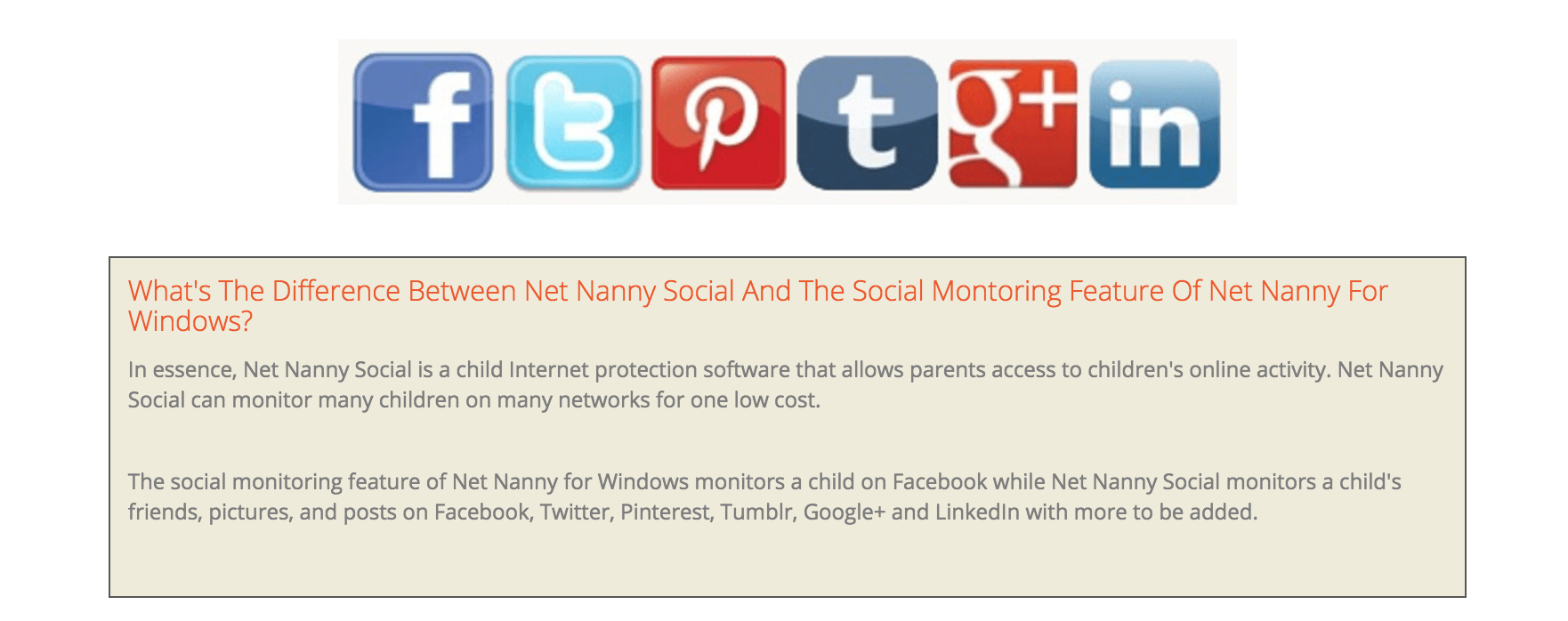
- Koalasafe: $99
Like Circle, Koalasafe is a device you plug into a router. What is interesting with this one is that KoalaSafe will tell you how your household compares to others, as well as what’s recommended. Would you like to know if Facebook usage went from 1 hour to 20 hours in a week? KoalaSafe will tell you.
Koalasafe Features:
– Time Limits
– Site and App Blocking
– Parental Insights
– YouTube SafeSearch
– Google SafeSearch
– Companion Apps
– Internet Stop Button
– Per Device Profiles
– Weekly Usage Report
– Allow or Disallow any site
7. Luma: 3 pack is $399
– This is a router with security and filters.
– Get the fastest WiFi anywhere, on all of your devices, all at once
– Keep your kids out of harms way and set content filter ratings at the network level
– Lock down your home internet with enterprise-grade cybersecurity
– pause the internet, set rules
Whatever you choose, and however much you regulate the kids’ internet, phone and app use, remember that there will always be change and new apps. I try to set Google alerts and keep up to date on tech news when reading Flipboard so that I can be a bit ahead of the game. Good luck!!


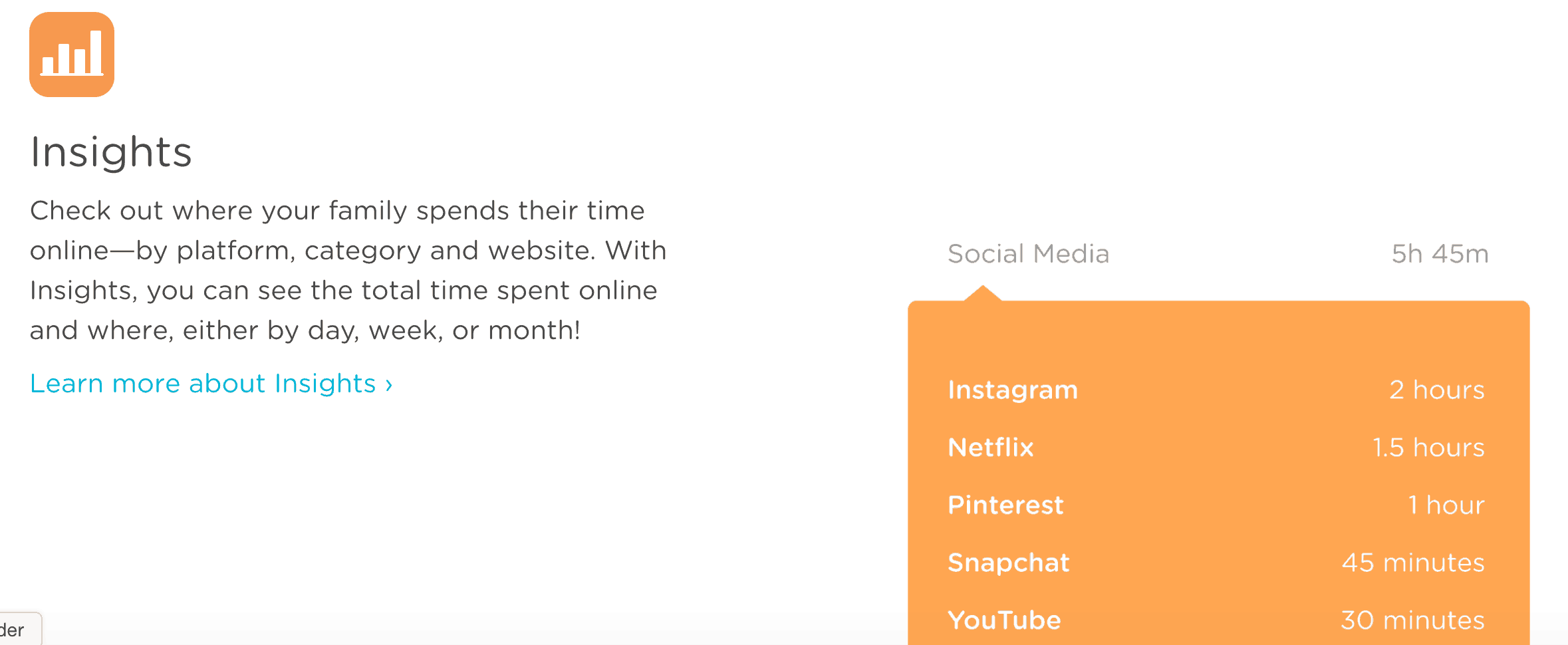
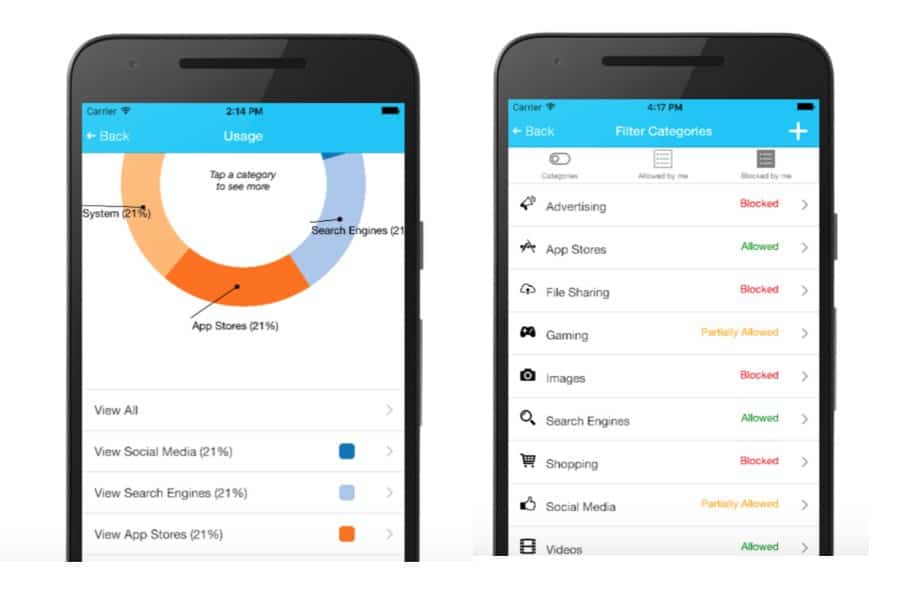
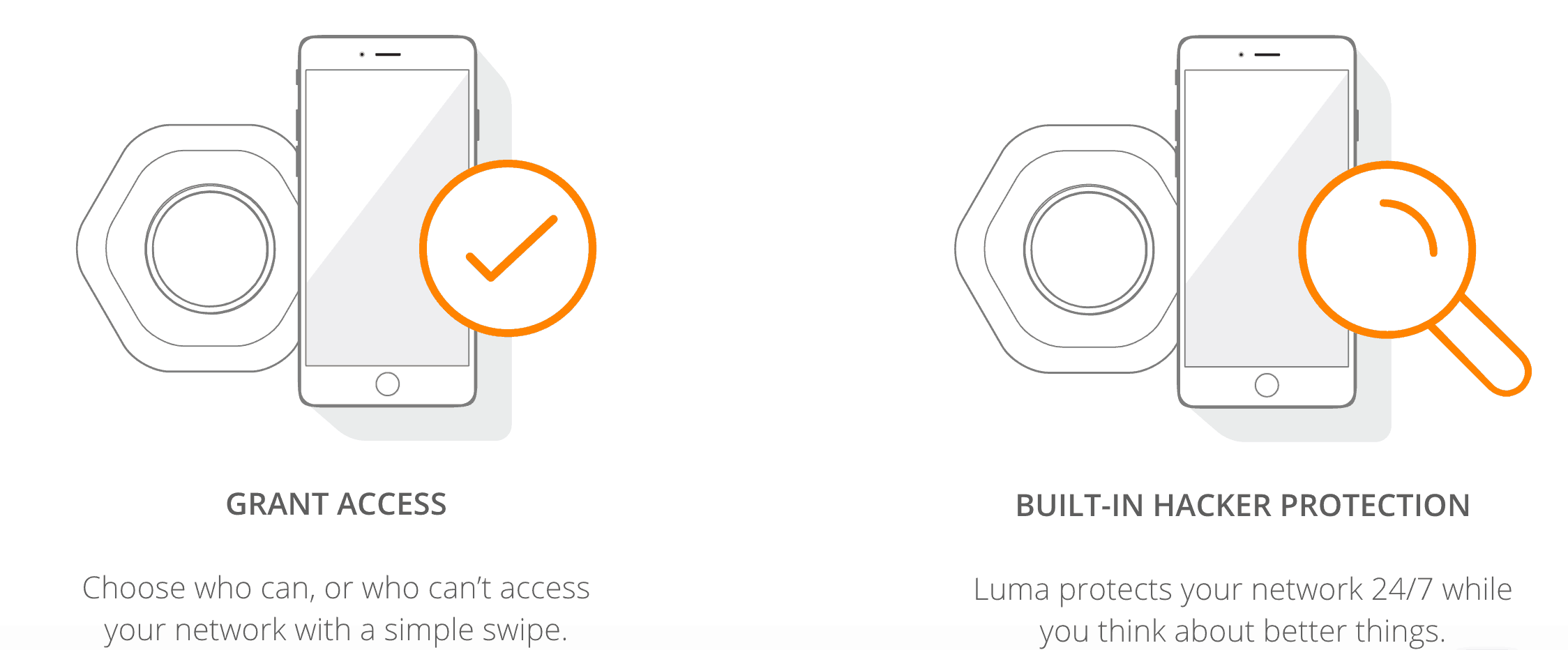


[…] network and lets you personally manage each internet-connected device in your home. I did a full roundup of apps and devices to keep your kids safe that explains it in more detail. You can create profiles for each family member, set daily time […]
I also use a parental control app- Kidslox. This app is great. It helps easily managing my son’s screen time. There was a time when he used his devices almost all day long. Now we have a strict rule and I use KIdslox a time tracker. I’ve also blocked all ‘bad’ websites he used to visit. Definitely, when I just started using the app we had some conflicts but I talked to my kid every day, I explained why I started using the app, explained that I do not want just to control him, but want to protect his mind and eye-sight.
My family uses Kidslox as well ( http://www.kidslox.com), but I set schedules for my kid with the help of this app. Homework is of high priority for us, so I set time when he can’t reach his favorite games or watch films on his phone at that exact time. Also, we have “Bedtime” schedule for me to be sure that my son sleeps after 9 pm and not hides under the blanket and plays games or listens to music. I am very satisfied with Kidslox and always recommend it to my friends who have kids who are addicted to their mobile phones.
Our family uses Netsanity – not listed here ( https://netsanity.net ). It has been especially useful when the kids are out of the house with their devices. We tried a lot of these on the list. Thanks for the reviews!
We use Netsanity as well dad of two boys and we love it! We tried Circle and it slowed the internet down terribly which was not a hit with our teens. We love Netsanity because you load it on the device and you don’t have to worry when your teen leaves the house!